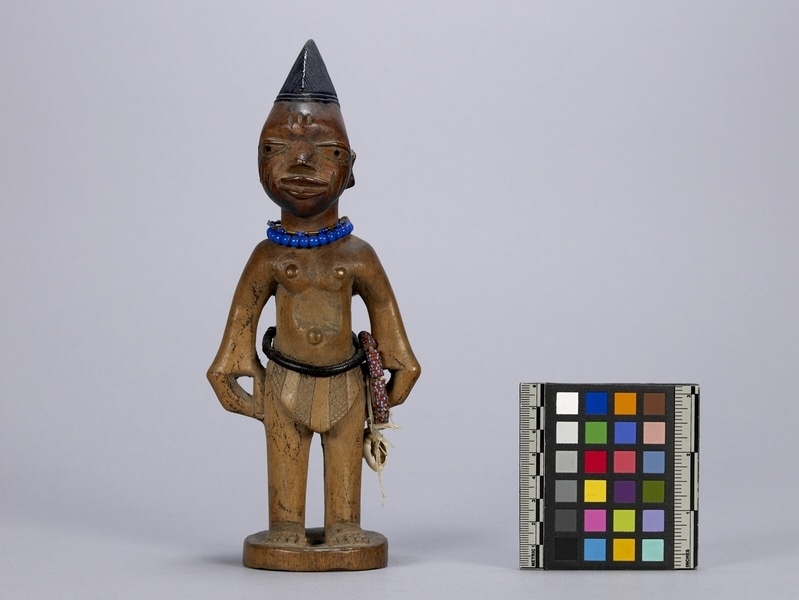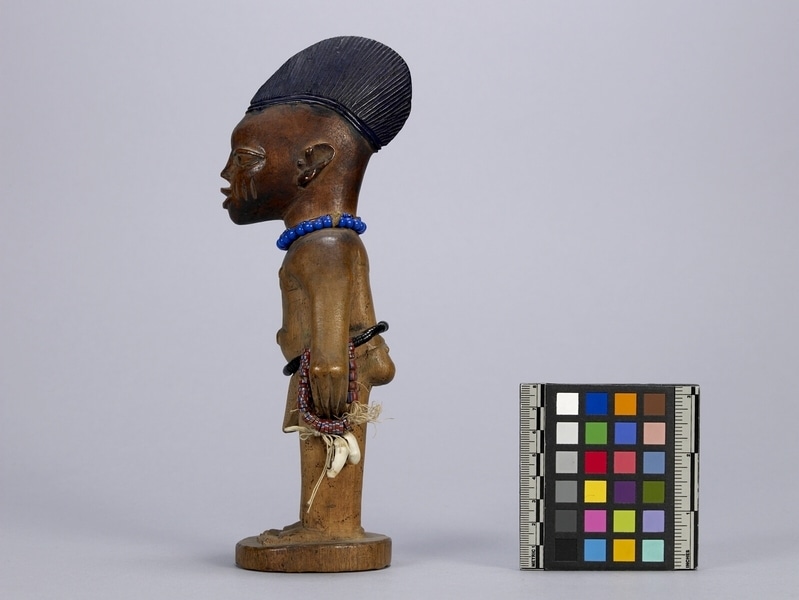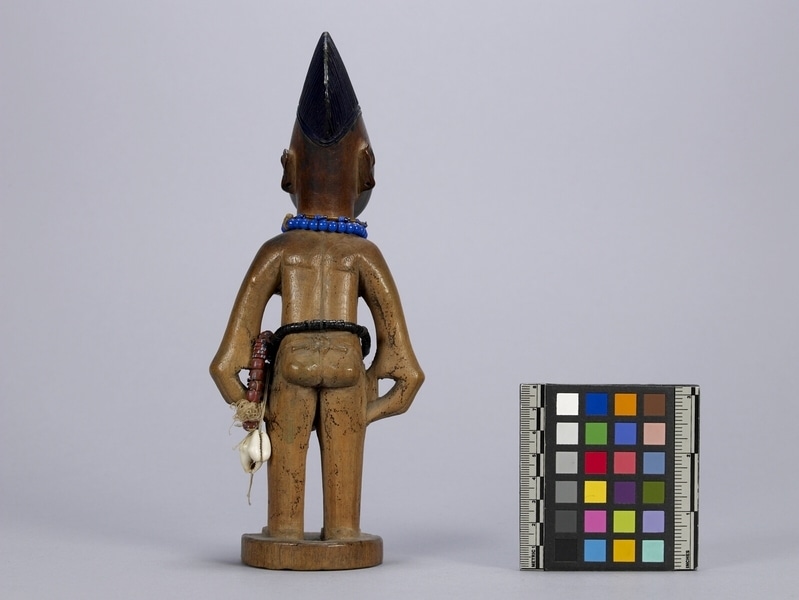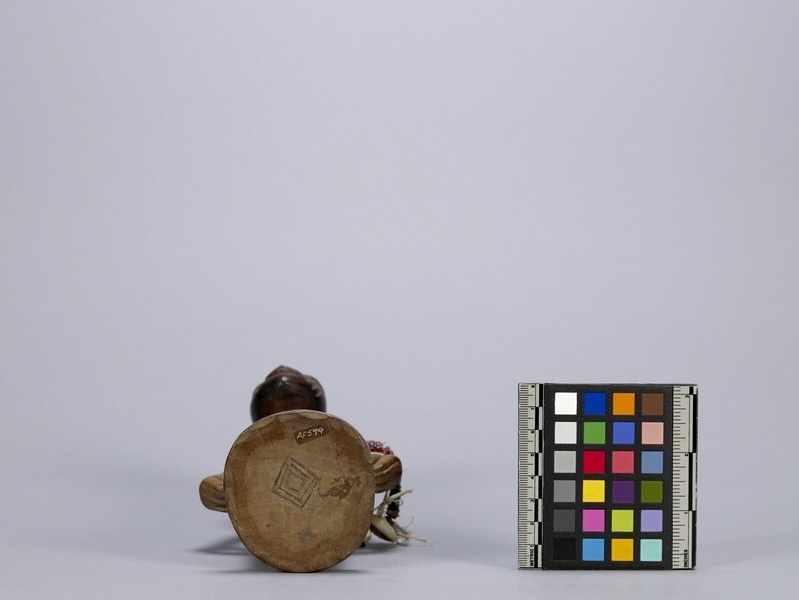Figure Item Number: Af579 from the MOA: University of British Columbia





Description
Standing wood figure (ibeji) with black beaded waistband. Stylized black hair is slightly oblong, and is accentuated with vertical grooved lines. Three oval grooved marks on the forehead, and on each cheek. Arms are at the sides. Slight breasts, and a naval. Has a blue beaded necklace, and a blue, black, and clear orange-yellow beaded necklace. Its left arm has a string of cowrie shell, and blue, and red beads. Doll has a loin cloth carved with panels and stands straight on a circular pedestal.
History Of Use
Based on the sacred duality of "twoness" (èjìwàpò) found in nature, such as life/death, right/left, male/female, twins are understood as bringers of wealth and blessings to their family if they are satisfied, or misfortune if they are dissatisfied. As a result, living twins are treated with a high degree of respect and favouritism. When a twin, or both, dies the parents consult a diviner (babalawo), who communicates the desires of the deceased; small commemorative wooden figures (ère ìbejì) are carved to honour and represent them. Yorubas believe that twins share a soul, so the family was to treat the figure as they would if the twin was still physically present. As a result, the twin was fed, washed and cared for. Rather than realistic representations, ère ìbejì are idealized forms. They are often decorated with cowrie shells, beaded or metal bracelets, necklaces, and anklets, and cosmetics, such as osun (camwood powder), indigo, and efun (white chalk). By the mid-19th century, Christianity and Islam began to influence the design of ère ìbejì. Yoruba Muslims sometimes commissioned ere ibeji with carved torah, or leather packets containing quotations from the Quran, while Yoruba Christians incorporated Virgin Mary medals or crucifixes. In the mid-20th century, manufactured or plastic dolls began to replace the traditional ère ìbejì. Today, these dolls, in addition to the use of photographs, continue to sustain the ère ìbejì tradition.
Iconographic Meaning
The facial scarification on both cheeks (ila, or “lineage face mark”) indicates a specific community to which the represented deceased twin belongs. The diamond-like pattern carved on the base of this figure generally symbolizes a woman.
Item History
- Made in Nigeria
- Owned by Eric Sonner before October 22, 1990
- Received from Eric Sonner (Donor) on October 22, 1990
What
Who
- Culture
- Yoruba
- Previous Owner
- Eric Sonner
- Received from
- Eric Sonner (Donor)
Where
- Holding Institution
- MOA: University of British Columbia
- Made in
- Nigeria
When
- Ownership Date
- before October 22, 1990
- Acquisition Date
- on October 22, 1990
Other
- Item Classes
- carvings & sculpture
- Condition
- good
- Current Location
- Case 100
- Accession Number
- 1433/0079